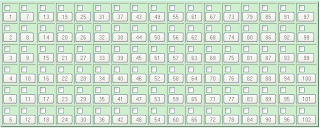Introduction about selecting on the dependent variable:
Independent variable is a variable which does not depends on any other variable. But the dependent variable should depend only on independent variable. The dependent variable’s value depends on direct or indirect variation. In direct variation if the value of independent variable increases then the value of dependent variable also increases and if independent variable decreases then the value of dependent variable also decreases. Here we are going to learn about some example problems of selecting on the dependent variable.
Looking out for more help on Confounding Variable in algebra by visiting listed websites.
Simple Example Problems of Selecting on the Dependent Variable.
Example 1:
What is the dependent variable in the function f(x) =4-x?
Solution:
In the function f(x) = 4 - x, the value of f(x) depends on the value of x. So, f(x) is dependent variable.
Example 2:
What is the dependent variable in the function f(x) =10-x?
Solution:
In the function f(x) = 10- x, the value of f(x) depends on the value of x. So, f(x) is dependent variable.
These are the examples of selecting on the dependent variable.
Some more Examples of Selecting on the Dependent Variable:
Example 3:
Check whether the d variable dependent or not in the equation d=8b
Solution:
Step 1: The given equation is d=8b.Here =d is dependent variable and b is independent variable.
Step 2: Now plug different values for b and check the value of d for each value of b.
Step 3: When b = 1 =the value of d is 8.
Step 4: When b = 2 =the value of d is 16.
Step 5: When b = 3 =the value of d is 24.
Step 6: When b = 4 =the value of d is 32.
Step 7: When b = 5 =the value of d is 40.
Step 8: If the value of b increases then the value of d is also an increase.
Step 9: So, d is a dependent variable.
These are the example problems selecting on the dependent variable.
Independent variable is a variable which does not depends on any other variable. But the dependent variable should depend only on independent variable. The dependent variable’s value depends on direct or indirect variation. In direct variation if the value of independent variable increases then the value of dependent variable also increases and if independent variable decreases then the value of dependent variable also decreases. Here we are going to learn about some example problems of selecting on the dependent variable.
Looking out for more help on Confounding Variable in algebra by visiting listed websites.
Simple Example Problems of Selecting on the Dependent Variable.
Example 1:
What is the dependent variable in the function f(x) =4-x?
Solution:
In the function f(x) = 4 - x, the value of f(x) depends on the value of x. So, f(x) is dependent variable.
Example 2:
What is the dependent variable in the function f(x) =10-x?
Solution:
In the function f(x) = 10- x, the value of f(x) depends on the value of x. So, f(x) is dependent variable.
These are the examples of selecting on the dependent variable.
Some more Examples of Selecting on the Dependent Variable:
Example 3:
Check whether the d variable dependent or not in the equation d=8b
Solution:
Step 1: The given equation is d=8b.Here =d is dependent variable and b is independent variable.
Step 2: Now plug different values for b and check the value of d for each value of b.
Step 3: When b = 1 =the value of d is 8.
Step 4: When b = 2 =the value of d is 16.
Step 5: When b = 3 =the value of d is 24.
Step 6: When b = 4 =the value of d is 32.
Step 7: When b = 5 =the value of d is 40.
Step 8: If the value of b increases then the value of d is also an increase.
Step 9: So, d is a dependent variable.
These are the example problems selecting on the dependent variable.



